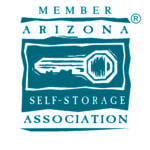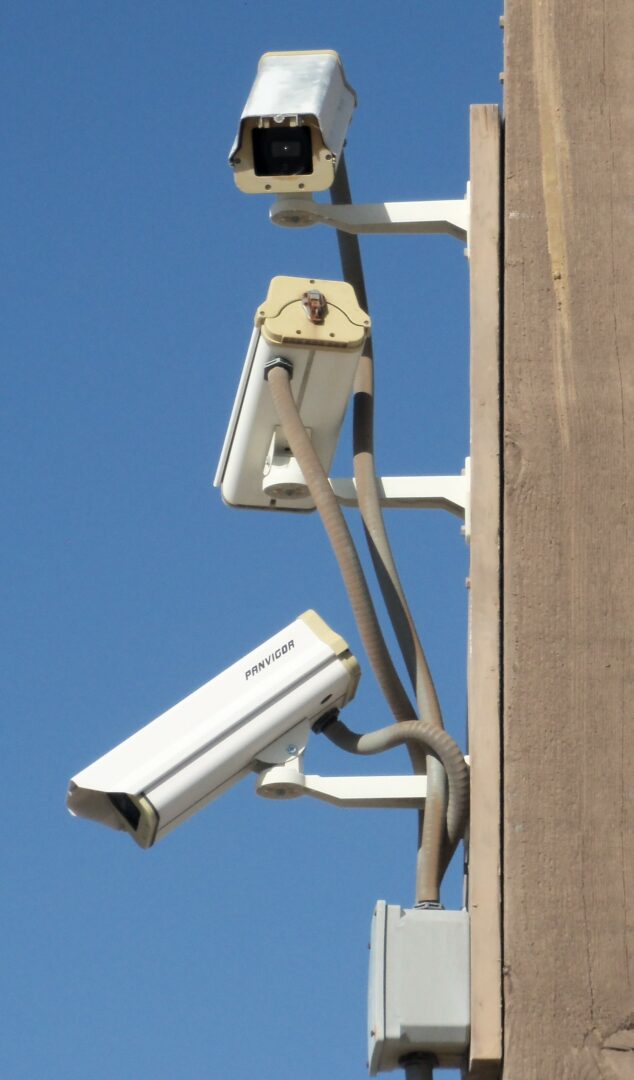Learn How to Make the Most of Your Self-Storage Space
Buckeye Mini Storage Self-Storage Tips
Self-storage rental units can be a space you visit more than once or twice a year. Well-organized units help free up some additional space in your home, apartment, condo, office, or garage. To get the most out of them, it is best to plan ahead before you start loading up your car or truck.
Here are some helpful steps:
Step 1: Have a Plan on What You Will Store
Start by deciding which items will be packed in boxes and stacked on top of one another. Some boxes you may occasionally want in, and they should go close to the front of the unit. Try to group your items by fragility or weight. Heavy items should be stored on the bottom of the stack and fragile items normally go on top.
Step 2: Choose the Right Size Unit
Nobody likes to pay for storage they don’t really need, but a little extra space may allow you to move around within the unit. See our Rental Cost page for a quick breakdown of the size right for you.
Step 3: Pack Your Items and Organize Them
Here are some tips:
Use boxes or hard plastic containers and not plastic bags. Good boxes and hard plastic containers are sturdier and stack well and actually take up less space. Sealed plastic bags can trap humidity, which can cause damaging mildew. Boxes should be in good condition and, hopefully, the same size. Free boxes from supermarkets and liquor stores are generally not a great idea. They are normally mismatched in shape and size and will reduce your ability to organize and stack them. For wrapping breakables, paper will do, but bubble wrap can be used repeatedly, is cleaner, and because it is transparent, it may help make items easier to find. Box up everything that you can. Anything left unboxed in a self-storage facility can get dusty. Fill boxes to capacity. Corners and sides can collapse if there’s nothing to support them. Foam peanuts help fill in the gaps in boxes. Distribute the weight in packed boxes evenly. Make sure they are not too heavy for you and others who may be lifting them. Wrap all fragile items and breakables such as dishes, glasses, ornaments, etc. separately. Pack these items tightly into strong or reinforced boxes, filling any gaps with paper or filler. Mark “Fragile” on any boxes containing breakable items.
Clearly label all boxes on more than one side so you can easily identify the contents. Pack your books flat to avoid damaging their spines.
If you plan to store clothes, think about investing in a wardrobe box with a built-in hanging rod. Defrost refrigerators and freezers thoroughly to avoid water damage and mildew growth. Tie down the appliance doors during transport, but leave them open a crack while in storage. It’s also a good idea to wipe down the inside with baking soda. Wrap mirrors and pictures in protective bubble wrap and mark them as “Fragile.” Cardboard corners are a great idea. If you're storing upholstered products such as mattresses and sofas, consider investing in covers, bags, or sheeting for additional protection. Vacuum-sealed bags work really well for draperies, bedding, and clothing.
Electrical equipment such as TVs, stereos, and computers should be packed in their original boxes whenever possible. If using other boxes, choose ones that are as close in size to the original as possible and fill all gaps with paper. Spray your wood furniture with a good quality furniture polish before storing it to give it some added protection. Treat leather items with a leather conditioner before you store them. Wipe down metal objects and tools with a little oil before storing them to avoid rust formation that can occur when the tools are not used regularly. When storing a vacuum cleaner, clean out the bag or canister first; bacteria, mold, and vermin can accumulate otherwise.
Step 4: Unpack and Arrange Items
Here are a few suggestions for putting items into your unit:
Plan Ahead
While your storage unit should already be clean and swept out, consider putting down protective canvas sheeting, cardboard, or wooden boards on the floor for cleanliness. Keep a fold-up step stool in your space for accessing hard-to-reach areas. Based on the climate in which you live or work, consider putting down moisture absorbers, deodorizers, and/or vermin bait to protect your belongings. Frequently used items should be placed near the entrance for easy access. This holds true for file boxes and other business items too. To ensure the security of valuable items such as computers or TVs, place them farthest from the door, with other items concealing them. Unload the largest items and place them against the far wall as well as along the sides of the unit. For documents that you won’t need to access frequently, place them against the far wall of the unit. When arranging items, leave an aisle space for easy access to your items. You can either leave aisles between your stacks of boxes and furniture or line up all your furniture and boxes against the outside walls of the unit in a “U” shape, leaving the inside of the “U” as open space.
For Furniture and Other Large Items
Break down furniture into smaller pieces if possible. Take the legs off tables, disassemble bed frames, and lean them against the wall, etc. Cover furniture with sheets or tarps to protect them against scratches, dust, and other damage. Stand sofas on end when possible.
Chairs can be stacked seat to seat. In most cases, you can stack dryers on top of washers.
For Odd-Shaped, Miscellaneous Items
You can tie tools and long-handled items such as rakes, shovels, and brooms in bundles or put them inside garbage cans to keep them neat. Mirrors and framed artwork should never be stored flat as they can collapse under their own weight. Be sure when stacking boxes and containers that you can clearly see the labels you put on them. When stacking boxes, always make sure to put the heaviest boxes at the bottom to avoid damage. Stack boxes and similarly sized items together to save space.
Be Creative
You can use virtually all of the space in and around your stored furniture, including other items, as places to store more items. Fill anything that's hollow with items to maximize your available space:
- Furniture drawers are good for storing fragile items.
- Stack the shelves of bookcases with books, small boxes, and other odds and ends.
- Store boxes containing fragile goods inside of wardrobes.
- Store pillows, blankets, and other bedding inside washers and dryers.
- Store clothes inside dresser drawers.


